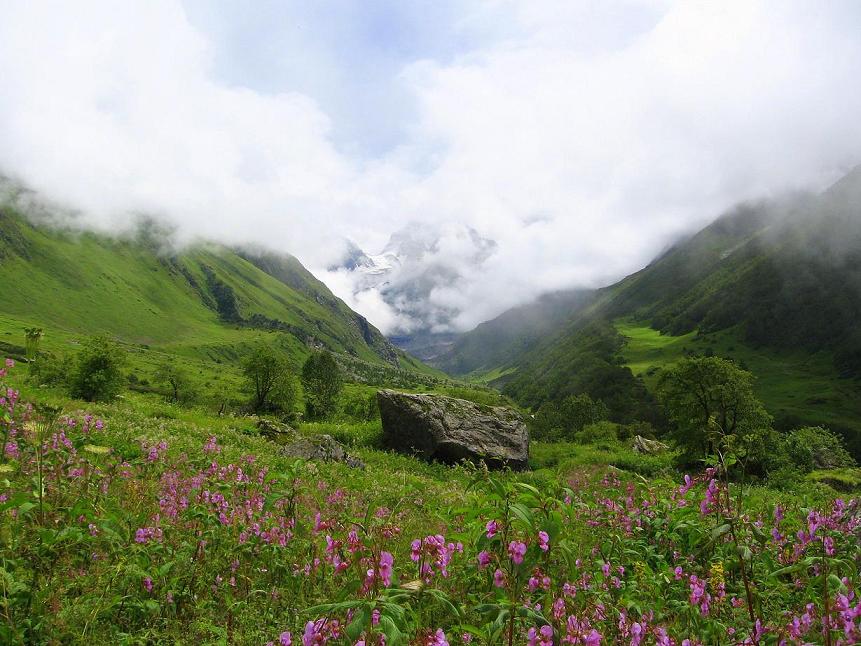
The weed, which ironically is also an annually flowering weed, has a wiry stem and stem branches that grow out of the base of the plant in an open form, or laying on the ground soil. This prevents the seeds of the plants falling on the ground and germinating and thus propagating.
The Valley authorities said that they had been fighting a losing battle for containing the spread of the weed that is slowly but steadily spreading in the Valley and taking a toll of its rich flora. “We have spent lakhs of rupees during the past five years trying to contain the spread of the weed, but not with much success”, they claimed.
They said that they were spending on an average of Rs 5000 per hectare to contain the spread of the weed, but not with much success and had even sent requests to various agencies abroad, but an effective response was still awaited.
It may be recalled that because of its location, it had been lost as a tourist spot, till three 
It is renowned for its meadows of endemic Alpine flowers spread over an area of about 80 sq kms and was declared a national park in 1982. It is on the UNESCO World Network of Biosphere Reserves since 2004 and is World heritage Site.
Popular local belief was that the Valley, which abounds with Brahm Kamal (a flower in demand by devotees going to the Kedarnath shrine), poppies, specially blue poppy, cobra lily, orchids, daisies and primulas, used to be inhabited by fairies who survived on the nectar from the flowers.
Prof Chandra Prakash Kala, a botanist deputed by the Wildlife Institute of India, deputed by the Wildlife Institute of India carried out, a research study in the Valley for a decade beginning 1993 and made an inventory of 520 alpine plants, of which 498 are flowering plants.
A journalist with over 40 years of experience, Jagdish Bhatt was Editor, Hill Post (Uttarakhand).
Jagdish had worked with India’s leading English dailies, which include Times of India, Indian Express, Pioneer and several other reputed publications. A highly acclaimed journalist, he was a recipient of many awards
Jagdish Bhatt, aged 72, breathed his last on 28th August 2021 at his Dehradun residence.



terrible news. I hope something can be done about this.
It needs to be preserved….
A sad news. Somebody should do something.
VOF is a heritage site and attracts a lot of foreign and domestic tourists. The local economy is totally tourism dependent, and if anything goes wrong with the valley, with the tourism falling, the common man(local population) would get hurt first. The government should take action before the paradise is lost for ever.
However, had the govt been awake this place would not have remained unknown for so long; this place is like switzerland of india and the it deserves to have a name.
I urge all those nature lovers, who have been to this heaven and those who wish to go there, to group and start working to save the heaven on Earth.
contact me if anybody wish to work on this one “[email protected]”
Enough of this loitering, now its time to preserve the cradle…come forward